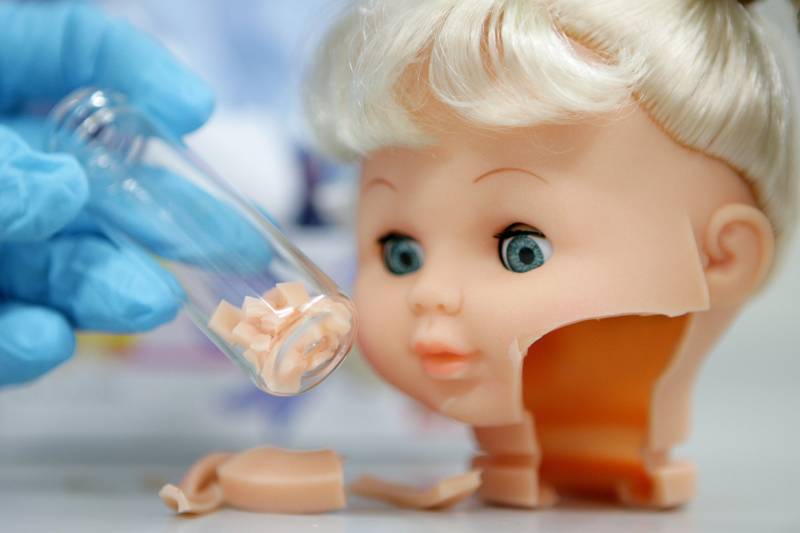
Parents often allow their children to play with plastic toys, probably not realising that many of these toys could contain dangerous chemicals. This is a serious issue that deserves immediate attention. A recent study on toys sold in different stores in Karachi revealed the presence of harmful chemicals like lead, mercury, cadmium, and chromium. These substances can be very dangerous, especially for young children, and both parents and authorities need to act.
Unfortunately, in Pakistan, there is not much awareness about the fact that toys can be toxic. This is why it is so important to spread awareness and create new rules and regulations to protect children. One of the key measures should be creating a system under the Pakistan Standards and Quality Control Authority (PSQCA) that would check toys for harmful chemicals, ensuring they are a safe presence in the market for kids.
India offers a good example. The Indian government recently made a commitment to testing all toys — whether made locally or imported — for toxicity. This decision came after the Indian Supreme Court took an interest in the types of pigments used in the paints that coat toys. This kind of action is needed in Pakistan as well to safeguard children's health.
According to a research paper titled “Contamination by Hazardous Elements in Low-Priced Children’s Plastic Toys Bought in Local Markets of Karachi, Pakistan,” the results show that many toys in Karachi contain high levels of toxic elements. These contaminated toys, especially the low-priced ones, are easily available because of a lack of regulations that allow them to enter the market. The research indicates that these toys can be very dangerous for children's health, potentially causing serious issues with their brains, kidneys, bones, and nervous systems. Even small amounts of toxic elements in a child’s blood can have harmful effects.
The researchers collected 44 samples, including 23 plastic toys and 21 toys with paint or coatings, randomly purchased from different markets in Karachi. The selected toys were mostly low-priced items designed for young children aged 3 to 5, which are popular among low-income families. The samples included cars, soft baby toys, animal figures, balls, fruit toys, soft dolls, ships, and planes. The toys were divided into two categories: children’s plastic toys (DCT) and children’s plastic toys with paint or coatings (DPCT). All samples were coded and stored in their original packaging.
In addition to raising awareness about toy safety, we should also think about creating a social environment, where children spend more time with family, friends, and nature, rather than relying on plastic toys and gadgets for entertainment
The tests thus conducted uncovered some alarming facts. Half of the hard plastic toys had between 10mg/kg and 20mg/kg of lead, and between 10mg/kg and 30mg/kg of cadmium in their paint coatings. Soft toys also had concerning levels of cadmium — between 4mg and 7mg per sample. Even worse, many toys had phthalate levels far above the safe limit set by the European Union. Phthalates are harmful chemicals often used to soften plastic, and high levels of these chemicals were found in cheap and low-quality toys.
One of the most concerning findings from the tests is that the claims made by toy manufacturers and sellers about the safety of their products are often false. For example, one imported doll labeled as "non-toxic" and safe for children aged between three and 18 months was found to have phthalate levels many times higher than the safe limit.
These toxic chemicals pose a real danger to children's health, but there is currently no system in Karachi — or anywhere else in Pakistan — to check toys for contamination, whether they are made locally, imported, or smuggled in. Studies have shown that even low levels of lead exposure in children can lead to a drop in a population’s average intelligence and reduce overall productivity. This is a major concern for public health and society at large.
In many countries, including those in the European Union, strict laws are in place to regulate the use of toxic chemicals in toys. These laws provide clear guidelines for toy manufacturers, distributors, and importers. In Pakistan, around 80% to 90% of the toys are imported, mostly from China, to meet the country’s demand. Between 2016 and 2020, Pakistan imported an average of $112.17 million worth of toys each year, while toy exports made up only 0.002% of the country’s total exports. The local toy industry only meets 5% to 10% of the domestic demand. Therefore, it is important to establish clear manufacturing guidelines to prevent contamination at various stages of production. Lead is often used in toy paints and to make plastic softer, while mercury is sometimes used in adhesives.
For imported toys, regular testing is necessary to ensure they meet international standards for safe levels of heavy metals and chemicals. Sadly, children's toys are not currently included in the list of products tested by the PSQCA. To help protect children, these toys should also be labeled with hazard warnings to inform parents of any potential risks. Public awareness campaigns could help educate people about the toxins present in plastic products, encouraging families to reduce their use of plastic toys in everyday life. At the same time, promoting safer, more environmentally friendly toy alternatives is necessary.
In addition to raising awareness about toy safety, we should also think about creating a social environment, where children spend more time with family, friends, and nature, rather than relying on plastic toys and gadgets for entertainment. By focusing on activities like sports, outdoor play, and spending time with loved ones, we can help nurture healthier, more well-rounded children.
The danger posed by toxic chemicals in children's toys is real, but it can be addressed through awareness, testing, and regulation. Parents must become more informed, and the authorities need to act quickly to establish safety standards. By working together, we can help ensure a safer, healthier future for our children.

